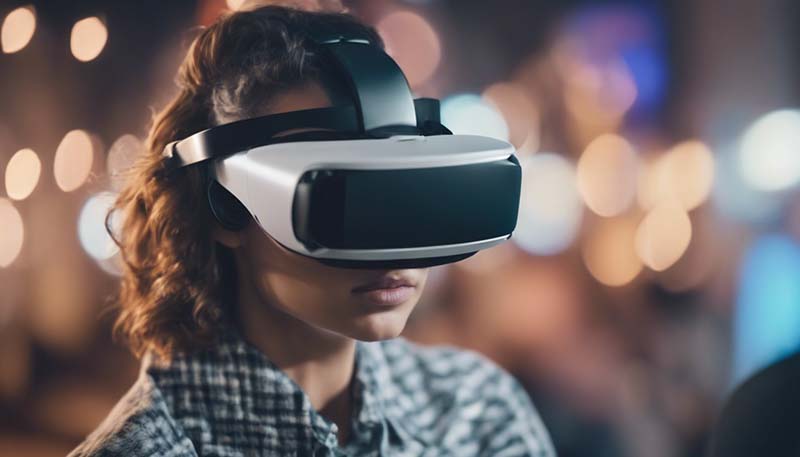The Role of Virtual Reality in Public Policy
The Role of Virtual Reality in Public Policy
Virtual Reality (VR) has been a topic of fascination for decades, but it is only in recent years that the technology has become advanced and affordable enough to be accessible to a wider audience. As VR continues to evolve, it is starting to play a significant role in various sectors, including public policy. This article will explore the ways in which VR is being used in public policy, the benefits and challenges it presents, and its potential future impact.
Introduction to Virtual Reality
Virtual Reality is a technology that allows users to immerse themselves in a computer-generated environment. This is achieved through the use of a headset that displays a virtual world to the user, and often includes additional sensory input such as sound or haptic feedback. VR has the potential to create highly realistic and engaging experiences, making it a powerful tool for a variety of applications.
Advertisement
The Use of VR in Public Policy
1. Education and Training
One of the primary ways in which VR is being used in public policy is in the field of education and training. VR can be used to create simulations that allow users to experience different scenarios and learn from them in a safe and controlled environment. This can be particularly useful in areas such as emergency response training, where it would be difficult or dangerous to recreate real-world situations.
2. Public Consultation and Engagement
VR can also be used to facilitate public consultation and engagement on policy issues. By creating virtual environments that allow users to explore and interact with proposed policies or projects, VR can help to increase public understanding and encourage more informed participation in the decision-making process.
3. Urban Planning and Development
In the field of urban planning and development, VR can be used to create detailed models of proposed developments. This allows policymakers and the public to explore and evaluate different options in a highly realistic and immersive way, helping to inform decision-making and ensure that the best possible outcomes are achieved.
Benefits of Using VR in Public Policy
1. Increased Engagement
One of the key benefits of using VR in public policy is the potential for increased engagement. By creating immersive and interactive experiences, VR can help to capture the attention of users and encourage them to become more involved in the policy process.

2. Enhanced Learning and Training
As mentioned earlier, VR can be a highly effective tool for education and training. By allowing users to experience different scenarios in a safe and controlled environment, VR can help to improve learning outcomes and prepare individuals for real-world situations.
3. Improved Decision-Making
VR can also help to improve decision-making in public policy. By providing a highly realistic and immersive environment in which to evaluate different options, VR can help policymakers to make more informed and effective decisions.
Challenges of Using VR in Public Policy
1. Accessibility and Affordability
One of the main challenges of using VR in public policy is accessibility and affordability. While VR technology has become more affordable in recent years, it can still be a significant investment for many organizations. In addition, not all users have access to the necessary equipment to experience VR, which can limit its potential impact.
2. Ethical Considerations
There are also a number of ethical considerations that must be taken into account when using VR in public policy. For example, there may be concerns about the potential for manipulation or bias in the virtual environments that are created, or about the privacy implications of collecting data on users' interactions with VR systems.
3. Technical Limitations
Finally, there are also technical limitations to consider when using VR in public policy. While VR technology has advanced significantly in recent years, there are still limitations to what can be achieved, and the quality of the experiences created will depend on the specific hardware and software used.
Future Impact of VR in Public Policy
As VR technology continues to advance and become more widely available, it is likely to play an increasingly important role in public policy. In the future, we can expect to see VR being used in a wider range of applications, and to see more sophisticated and realistic virtual environments being created.
However, it will be important to address the challenges and limitations of using VR in public policy, in order to ensure that it is used effectively and ethically. This will require ongoing research and development, as well as the development of appropriate guidelines and regulations to govern its use.
In conclusion, VR has the potential to make a significant contribution to public policy, by enhancing education and training, facilitating public consultation and engagement, and improving decision-making. However, it is important to be aware of the challenges and limitations of using VR in this context, and to take steps to address these issues in order to maximize its potential impact.
Comment